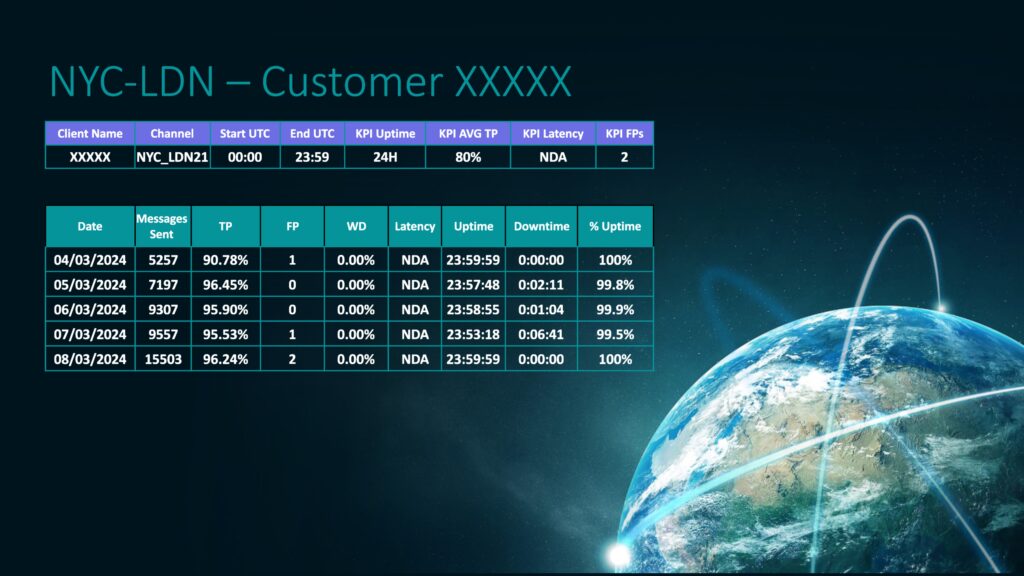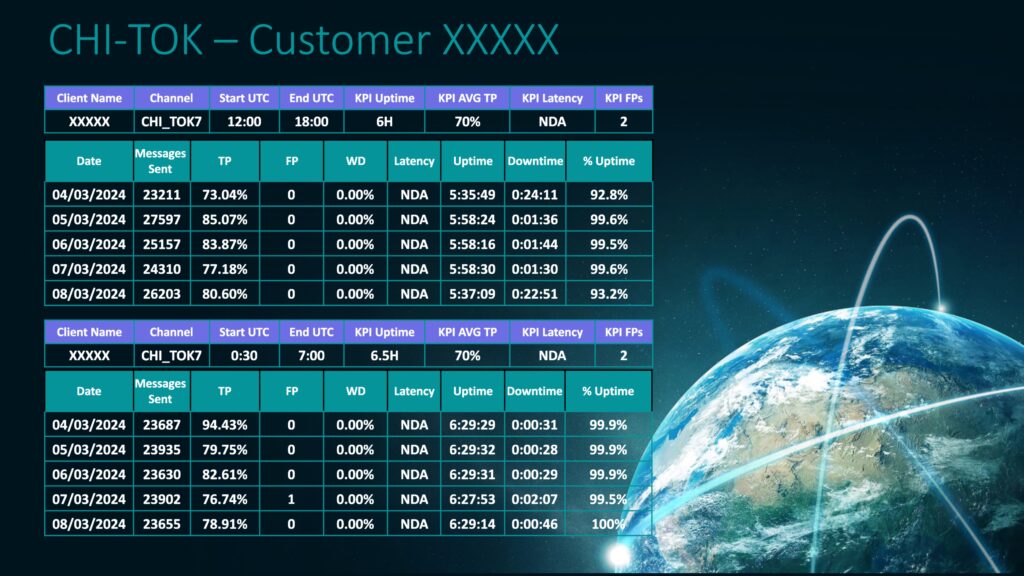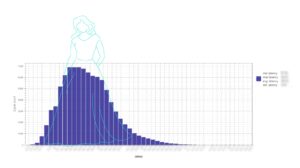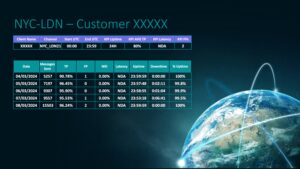(For a quick review of the basics of High Frequency (HF) radio links, visit here).
HF radio links offer superior speeds, their availability, however, is not absolute. We reviewed how daily, seasonal, and solar cycles impact availability by affecting the atmosphere layers that enable long-distance wireless connections.
Thanks to accumulated experience and developed technology, RAFT can provide very high availability, with many days showing 100% availability or a few minutes of downtime during a 24-hour operating window.
This is the work of the NOC – our Network Operating Center team.
The NOC
Unlike with other “always on” communication links, HF radio links are enabled by the NOC at the start of the operating window and are proactively managed throughout.
The operating window, defined per customer needs, could be set for certain hours of the day or run week-long 24/5 continuously; in such cases, the link’s open and close times are Monday 00:00 and Friday 23:59 UTC, respectively.
The NOC’s main task is finding HF radio frequencies that enable the best performance at every moment. RAFT’s system supports quick shifts between frequencies, taking place at the link’s transmit and receive sites.
Smooth operation
RAFT Links’ availability has been increasing continuously and reached a high level. We are used to seeing the daily percentage of received messages in the nineties, aka Goodput or Throughput.
The KPIs we track:
• Number of messages sent
• Throughput (% of received messages)
• False Positive error (unsent message is detected due to noise)
• Wrong Detection error (message detected is different than sent message)
• Uptime and Downtime in the defined operating window.
The table below outlines KPIs for our New York to London link, as experienced in July.
Throughput levels are higher than 90% and link’s availability is practically 24h –

The following table summarizes a week of activity (first week in March) in for a cross Pacific link – Chicago to Tokyo.
This link is challenging, being long (>10,000 Km with no hops) and bridging between two time zones that are far apart (Tokyo Japan, 14 hours ahead of Chicago).
The operating window in this example is split – 12:00 to 18:00 UTC and 0:30 to 7:00 UTC.
Throughput daily levels range 73-94% (the average during March was 85%); observing a very high uptime during the entire window of 12.5 hours per day –

AI-assisted link management
RAFT developed AI-based monitoring tools that account for many inputs and recommend the best-performing frequency at every moment. These tools could “auto-drive” a link, but we usually use the “drive assist” mode, whereby a NOC person remains in control, unless it’s a highway
More on our operational methods in a future post.
For a quick review of the basics of High Frequency (HF) radio links, visit here).
HF radio links offer superior speeds, their availability, however, is not absolute. We reviewed how daily, seasonal, and solar cycles impact availability by affecting the atmosphere layers that enable long-distance wireless connections.
Thanks to accumulated experience and developed technology, RAFT can provide very high availability, with many days showing 100% availability or a few minutes of downtime during a 24-hour operating window.
This is the work of the NOC – our Network Operating Center team.
The NOC
Unlike with other “always on” communication links, HF radio links are enabled by the NOC at the start of the operating window and are proactively managed throughout.
The operating window, defined per customer needs, could be set for certain hours of the day or run week-long 24/5 continuously; in such cases, the link’s open and close times are Monday 00:00 and Friday 23:59 UTC, respectively.
The NOC’s main task is finding HF radio frequencies that enable the best performance at every moment. RAFT’s system supports quick shifts between frequencies, taking place at the link’s transmit and receive sites.
Smooth operation
RAFT Links’ availability has been increasing continuously and reached a high level. We are used to seeing the daily percentage of received messages in the nineties, aka Goodput or Throughput.
The KPIs we track:
• Number of messages sent
• Throughput (% of received messages) False Positive error (unsent message is detected due to noise)
• Wrong Detection error (message detected is different than sent message)
• Uptime and Downtime in the defined operating window.
The table below outlines KPIs for our New York to London link, as experienced during July.
Throughput levels are higher than 90% and link’s availability is practically 24h –
NYC-LDN – 24H |
||||||||||||||||||||||||||||||||||||||||||||||||
|
||||||||||||||||||||||||||||||||||||||||||||||||
|
The following table summarizes a week of activity in july for a cross Pacific link – Chicago to Tokyo.
This link is challenging, being long (>10,000 Km with no hops) and bridging between two time zones that are far apart (Tokyo Japan, 14 hours ahead of Chicago).
The operating window in this example is split – 12:00 to 18:00 UTC and 0:30 to 7:00 UTC.
Throughput daily levels range in the 90%; observing a very high uptime during the entire window of 12.5 hours per day
CHI-TOK – 12H |
||||||||||||||||||||||||||||||||||||||||||||||||
|
||||||||||||||||||||||||||||||||||||||||||||||||
|
AI-assisted link management
RAFT developed AI-based monitoring tools that account for many inputs and recommend the best-performing frequency at every moment. These tools could “auto-drive” a link, but we usually use the “drive assist” mode, whereby a NOC person remains in control, unless it’s a highway
More on our operational methods in a future post.



